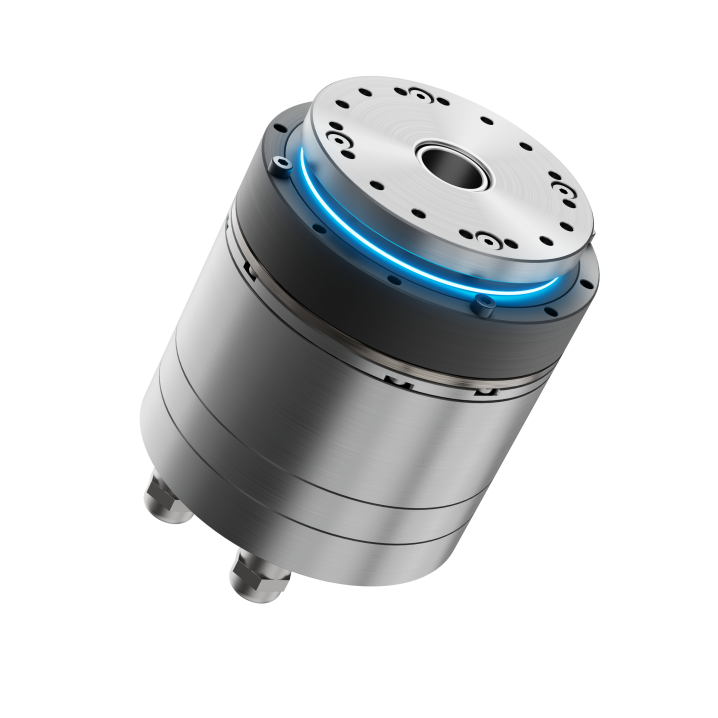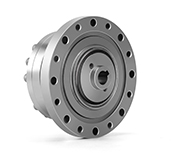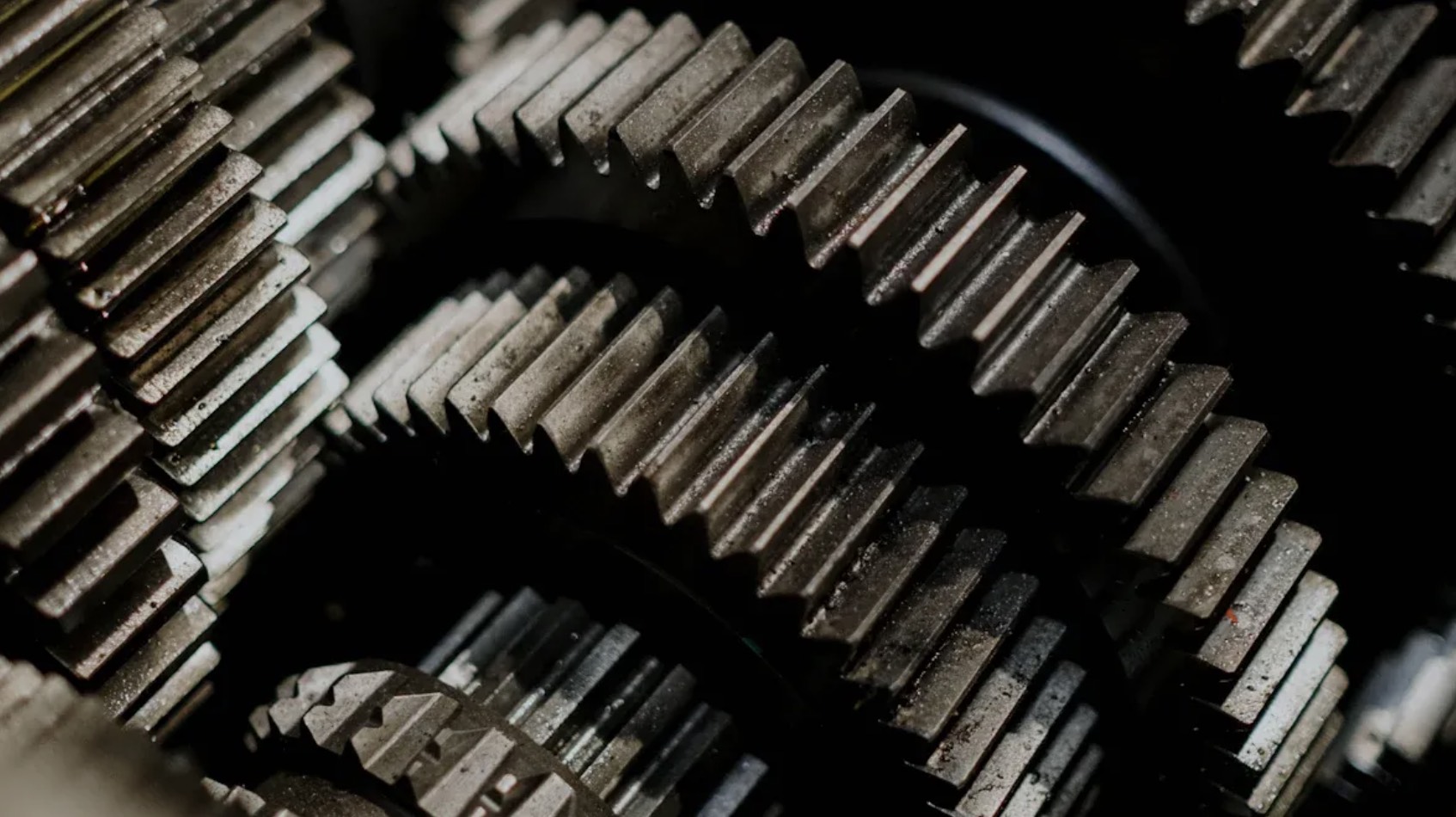Top Tips for Choosing the Best High Precision Planetary Gearbox
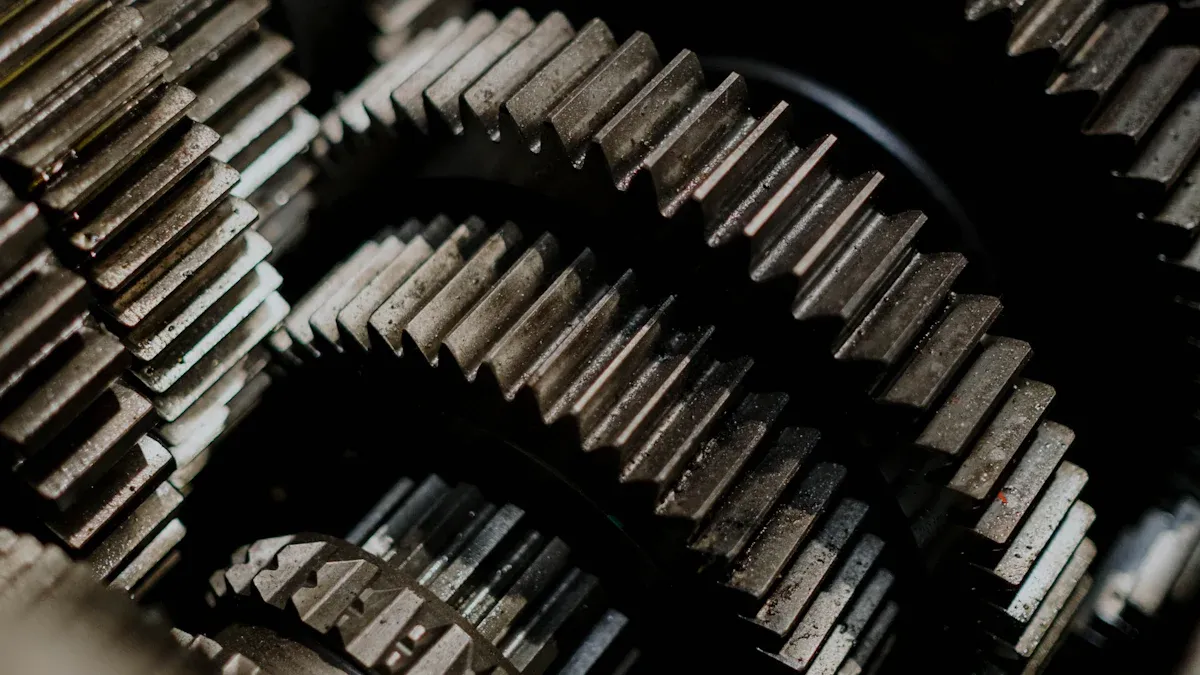
You want your equipment to work well and last longer. Picking the right high precision planetary gearbox is important. When you choose gearbox specifications that fit your needs, your system gives the right torque and speed. This careful choice lowers stress on parts and reduces vibration. It also makes your system more reliable. You get better efficiency and less damage. Always look at technical details and think about where the gearbox will be used. These steps help your system work its best.
Key Takeaways
-
First, know what your machine needs. Think about torque, speed, load, precision, and space. This helps you pick the right gearbox.
-
Look at where the machine will work. Check if it is hot, dusty, or wet. Then choose a gearbox with good seals and strong materials.
-
Pick a gearbox with the right torque ratings. Nominal torque is for long use. Peak torque is for short, strong bursts.
-
Choose a gearbox with low backlash. This makes the machine more accurate and smooth. It also helps the gearbox last longer.
-
Make sure the gearbox matches your machine’s speed and gear ratio. Also check the mounting style and output type. This helps your machine work well and makes it easy to install.
Application Requirements
Equipment Needs
Before picking a high precision planetary gearbox, you should know what your equipment needs. First, write down the main things your machine must have. These things are torque, speed, load, and space. Each one is important for how the gearbox works.
-
Torque: You need to find out how much torque your system uses. This lets you choose a gearbox that can handle the force and not break.
-
Speed: Look at both input and output speeds. The right gearbox will fit your speed needs and help your machine work well.
-
Load: Think about radial and axial loads. These loads come from parts that connect to the gearbox. If the load is too big, it can hurt the bearings or shaft.
-
Precision: Some machines need to move very exactly. In these cases, pick a gearbox with low backlash.
-
Space: Measure the area where you will put the gearbox. Planetary gearboxes are good for small spaces because they are compact.
Tip: Make a list of what your equipment needs. This helps you look at different gearboxes and pick the right one.
Here is a simple chart:
|
Equipment Need |
Why It Matters |
|---|---|
|
Torque |
Stops damage and keeps it strong |
|
Speed |
Makes sure it works as needed |
|
Load |
Keeps bearings and shaft safe |
|
Precision |
Helps with exact movement |
|
Space |
Fits in your machine’s space |
Operational Conditions
You also need to think about where your gearbox will be used. These things can change how well your gearbox works and how long it lasts.
-
Temperature and Humidity: Hot, cold, or wet places can change gearbox life. Pick gearboxes with good seals and the right materials for your place.
-
Dust and Corrosive Atmospheres: If your machine works in dusty or rough places, get gearboxes with strong seals and coatings that stop rust.
-
Running Time and Load Changes: Some machines work all day or carry heavy loads. Choose a gearbox with a service factor that fits these jobs.
-
Maintenance Needs: Gearboxes that are easy to fix save time and money. See if the gearbox is made for easy setup and care.
-
Noise and Efficiency: Some gearboxes are quieter and use less power. If this is important, ask about gear type and efficiency.
Note: Always write down all the things about where and how your gearbox will work before you choose. This helps you stop problems and keeps your system working well.
Torque
When you choose a high precision planetary gearbox, you need to understand torque. Torque is the force that makes things turn. If you pick the wrong torque rating, your gearbox may fail or wear out too soon.
Nominal and Peak Torque
You will see two main torque ratings: nominal torque and peak torque. These ratings help you know how much force your gearbox can handle.
-
Nominal torque is the amount of force your gearbox can handle all the time. This rating shows the gearbox’s strength for long, steady work. If you use the gearbox above this value for too long, it may get damaged.
-
Peak torque is the highest force your gearbox can take for a short time. You use this rating for quick bursts, like starting or stopping a machine. If you use peak torque too often, the gearbox will wear out faster.
Tip: Always size your gearbox based on nominal torque, not peak torque. This keeps your system safe and helps your gearbox last longer.
The difference between these ratings matters. If you only look at peak torque, you might pick a gearbox that is too big or too small. For machines that run all day, use the nominal torque rating. For machines that start and stop a lot, check both ratings. The right balance helps you avoid extra costs and keeps your system running well.
Emergency Stop Torque
Sometimes, your machine needs to stop very fast. This is called an emergency stop. During these stops, the gearbox faces a sudden, high force. You must check if the gearbox can handle this emergency stop torque.
To find the right torque for your application, follow these steps:
-
Find the input torque from your motor or drive.
-
Check the gear ratio of your gearbox.
-
Look at the efficiency of the gearbox.
-
Use this formula:
Output Torque = (Input Torque × Gear Ratio) / Efficiency
This method helps you pick a gearbox that matches your needs. Always check both normal and emergency conditions. This way, your gearbox will work safely and last longer.
Note: If your machine stops often or carries heavy loads, talk to the manufacturer. They can help you choose a gearbox that handles both regular and emergency torque.
Load
Radial Load
Radial load is the force that pushes sideways on the gearbox shaft. You need to know how much radial load your gearbox can handle. If you go over the limit, you can damage the bearings or the shaft. This damage can lead to early failure and costly repairs.
You can find the maximum radial load for your gearbox by using a simple formula. The formula is:
Pr = (C × Fr) / (n × Y)
-
Pr is the permissible radial load.
-
C is the basic radial load rating of the gearbox.
-
Fr is the applied radial load.
-
n is the rotational speed.
-
Y is a factor based on the bearing type and how you use the gearbox.
Each gearbox has its own values for these factors. You should check the manufacturer’s data sheet for the right numbers. If you use the gearbox at high speed or with heavy loads, you must pay extra attention to this calculation.
Tip: Always keep the radial load within the safe range. This helps your gearbox last longer and work better.
Here is a quick checklist for radial load:
-
Check the shaft size and support.
-
Use the formula to find the safe load.
-
Ask the manufacturer if you are not sure.
Axial Load
Axial load is the force that pushes along the shaft, either pulling or pressing it. This force can come from gears, pulleys, or other parts attached to the gearbox. If the axial load is too high, you can damage the bearings or cause the shaft to move out of place.
You should always check the maximum axial load rating in the gearbox manual. This rating tells you how much force the gearbox can handle in the axial direction. If your application uses both radial and axial loads, you must consider both at the same time.
Note: If you have high axial loads, choose a gearbox with strong bearings. This choice will help prevent early failure.
A table can help you remember the difference:
|
Load Type |
Direction |
Common Source |
|---|---|---|
|
Radial Load |
Sideways on shaft |
Belts, gears |
|
Axial Load |
Along shaft |
Pulleys, screws |
By understanding both radial and axial loads, you can pick a gearbox that fits your needs and keeps your system running smoothly.
Precision & Backlash
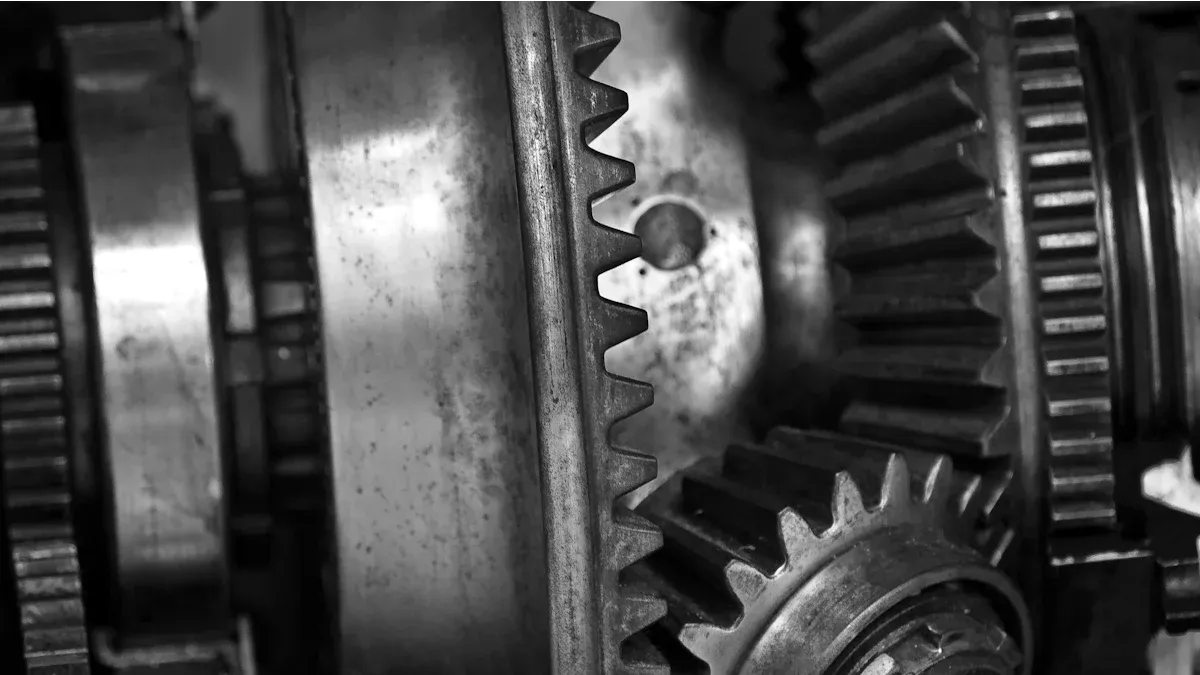
Backlash in High Precision Planetary Gearboxes
When picking a high precision planetary gearbox, you must watch for backlash. Backlash is a tiny space between gear teeth. This space lets gears move a bit before turning the output shaft. Most high precision planetary gearboxes have backlash from 1 to 3 arc-minutes. One arc-minute is one-sixtieth of a degree. Makers check backlash by using a small load, about 1-2% of the rated torque. They see how much the output shaft moves when the force direction changes.
Backlash is important because it causes lost motion. When your machine switches direction, gears fill this gap before moving the output. This pause can make positioning less accurate, especially for machines needing exact moves. For example, with 3 arc-minutes of backlash on a 300 mm turntable, you might get a linear error of about 0.26 mm each turn. Things like gear runout, tooth shape, and how well it is put together all change the amount of backlash.
Tip: For better precision, pick gearboxes with less backlash. Some advanced gearboxes have backlash under 0.5 arc-minutes. This is needed for robotics and CNC machines.
Positioning Accuracy
Positioning accuracy shows how close your machine gets to the target spot. In automation and CNC systems, you often need very tight limits. A high precision planetary gearbox with low backlash helps you meet these needs. Some setups can reach positioning accuracy better than 1 micrometer. This is possible because the gearbox keeps lost motion very low.
Lowering backlash helps your machine in many ways:
|
Aspect Improved |
How It Helps Your Machine |
|---|---|
|
Positioning Accuracy |
Cuts errors and helps repeat moves |
|
Efficiency |
Saves energy and lowers heat |
|
Smoothness |
Stops jerky moves and cuts vibration |
|
Service Life |
Makes the gearbox last longer and cuts downtime |
To get the best results, pick a high precision planetary gearbox with the lowest backlash you need. This gives smoother moves, better accuracy, and longer life.
Speed & Ratio
Input/Output Speed
You must match the input and output speed to your machine. Input speed is how fast your motor spins. Output speed is how fast the gearbox turns the part it moves. Gearboxes let motors work at their best speed. They also give the right torque at the output. This helps your system work better and last longer.
If you pick a gearbox with a lower input speed than your motor, it can get damaged. Always check that the gearbox’s input speed is as high as your motor’s speed. If you run it too fast, it can get too hot, make noise, or break early. When you match the speeds, your system works steady and well.
The output speed changes with the gear ratio. A higher gear ratio makes the output slower but gives more torque. This lets you use smaller motors to move bigger things. The right output speed also helps with control and accuracy. This is important for servo systems that start and stop quickly.
Tip: Always check both input and output speed before you choose your gearbox. This helps you avoid mistakes that cost money.
Gear Ratio Selection
Picking the right gear ratio is very important for high precision planetary gearboxes. The gear ratio tells how many times the input shaft must turn for the output shaft to turn once. This number changes speed, torque, and accuracy.
Here are some things to think about:
-
Higher gear ratios make the output slower and give more torque.
-
Lower gear ratios make the output faster but give less torque.
-
The gear ratio also lowers the load inertia by the square of the ratio. This makes your system react faster.
-
Backlash, which is a small gap between gear teeth, matters more in jobs like robotics or CNC machines.
-
How well the gearbox is put together and the parts used affect how well it keeps its ratio and stays precise.
|
Factor |
Why It Matters |
|---|---|
|
Gear Ratio |
Balances speed and torque |
|
Backlash |
Affects precision and repeatability |
|
Load Inertia |
Impacts system response and control |
|
Assembly Quality |
Ensures long-term accuracy |
You should also think about power loss, space, and noise. Good gear designs and strong materials help lower these problems. Always balance what you need for speed, torque, and precision when you pick a gear ratio.
Mounting & Space
Mounting Style
You have to pick the best mounting style for your high precision planetary gearbox. The mounting style changes how you attach the gearbox to your machine. There are a few common ways to do this. Each way works for different setups.
-
Flange Mounting: This style has a flat part with holes. You bolt the gearbox right onto your machine. Flange mounting gives strong support and keeps it steady.
-
Foot Mounting: This style has feet or brackets on the gearbox. You attach these to a base or frame. Foot mounting is good if you need to put the gearbox on a flat surface.
-
Shaft Mounting: Here, you slide the gearbox onto a shaft. You use keys or set screws to hold it in place. Shaft mounting saves space and is fast to install.
-
Face Mounting: This style uses the front of the gearbox. You bolt it to a panel or plate. Face mounting is helpful when you have little room.
Tip: Always look at your machine’s layout before you pick a mounting style. The right style makes it easier to install and keeps your system steady.
Space Constraints
Space can make it hard to pick a gearbox for robots or machines. You often need to fit the gearbox into small or crowded spots. Planetary gearboxes help because they are small and have input and output shafts in line. This saves space and works well for robots and electric cars.
Some gearboxes use special tooth shapes, like eccentric cycloid gearing. These designs let you get higher gear ratios in less space. You can use a smaller gearbox and still get the torque and speed you need.
Here is a table to show how different gearbox types fit into tight spaces:
|
Gearbox Configuration |
Spatial Influence and Advantages |
|---|---|
|
Single-Stage Planetary |
Small size and high torque; good for tight spaces and heavy machines. |
|
Multi-Stage Planetary |
More stages give higher gear ratio and torque but stay small; great for high torque jobs. |
|
In-Line Planetary |
Shafts in line save space; good for servo drives and factory machines. |
|
Offset Planetary |
Shafts are side by side, not in line; fits in odd spaces or shapes. |
|
Right-Angle Planetary |
Shafts at 90° save room in tricky layouts; used in conveyors and AGVs. |
Note: Always measure your space before you choose a gearbox. A small gearbox lets you build lighter, smaller, and better machines.
Environment
Temperature & Humidity
You need to watch temperature and humidity when picking a high precision planetary gearbox. These things can change how your gearbox works and how long it lasts.
-
Temperature changes how lubricants work. If it gets hot, lubricants get thinner. This can make parts wear out faster. If it gets cold, lubricants get thick. Thick oil can cause more power loss and dry friction. When the temperature goes up by 10°C, the oil gets about 10% thinner. If you use the wrong oil, your gearbox may not last as long.
-
Humidity and moisture can make your gearbox rust inside. Water also makes the oil break down. This can make your gearbox fail early. You can stop this by using good seals, desiccants, and doing regular checks.
If your gearbox runs in very cold places, it can lose up to 300% more power. This is because thick oil makes the gears move less smoothly.
You should always check what temperature and humidity your gearbox can handle:
|
Parameter |
Recommended Range |
|---|---|
|
Operating Temperature |
-10°C to 90°C (14°F to 194°F) |
|
Maximum Humidity |
Not to go over 85% (to stop condensation) |
If you work in very hot or cold places, use gearboxes with special oils and materials. This helps your gearbox keep working well.
Contaminants & Sealing
Things like dust, dirt, chemicals, and water can hurt your gearbox. These things act like sandpaper and wear out the gears and bearings. Chemicals and water can cause rust and break down the inside parts.
You can protect your gearbox by using:
-
Corrosion-resistant coatings like zinc, powder, or epoxy. These stop rust and chemical damage.
-
Advanced sealing solutions like special seals and strong gaskets. These keep out dust, water, and other bad stuff.
In tough places like sugar mills or near the ocean, gearboxes with strong seals and coatings last longer and need fewer repairs.
Checking and cleaning your gearbox often helps keep it safe from dirt and water. When you pick a gearbox, ask about its seals and coatings. This will help your gearbox work well, even in rough places.
Efficiency & Maintenance
Gearbox Efficiency
You want your machine to use less energy and work better. High precision planetary gearboxes help with this. These gearboxes have high efficiency. This means they do not waste much power as heat or friction. Most high precision planetary gearboxes are 94% to 97% efficient for each stage. This high efficiency helps your system use less electricity. It also lowers your running costs.
|
Gearbox Type |
Average Efficiency Rating |
Impact on Energy Consumption |
|---|---|---|
|
High Precision Planetary |
94-97% per stage |
High efficiency reduces energy use and costs |
|
Worm Gear Alternatives |
70-85% |
Lower efficiency increases energy losses |
Gearboxes lose power from gears, bearings, seals, and other parts. These losses depend on load, friction, lubricant quality, and temperature. Using the right lubricant and keeping the gearbox cool helps efficiency. This also makes your gearbox last longer and work better.
Tip: Pick a gearbox with high efficiency. This saves energy and lowers your bills over time.
Maintenance Needs
You need to care for your gearbox to keep it working well. Good maintenance helps your gearbox last longer and stops breakdowns. Here are some important steps you should follow:
-
Check your gearbox often for leaks and wear.
-
Make sure bolts and fasteners are tight and lined up.
-
Watch the temperature to stop overheating.
-
Check the oil often and change it when needed.
-
Listen for strange noises or shaking that could mean trouble.
-
Keep seals in good shape to block dirt and water.
-
Install motors carefully so you do not hurt seals.
-
Follow a maintenance schedule based on your use and what the manufacturer says.
Regular care keeps your gearbox efficient and reliable. A well-maintained gearbox saves you money and cuts downtime.
Selecting a High Precision Planetary Gearbox
Matching with Drive and Motor
You want your high precision planetary gearbox to work perfectly with your drive and motor. This match helps your system run smoothly and last longer. If you skip this step, you may face problems like noise, heat, or even early failure.
Here are the key steps you should follow:
-
Choose parts from the same supplier when possible. This makes sure everything fits together and you get full warranty support.
-
Use online tools to enter your torque, speed, and how you want the gearbox to sit. These tools help you find the right match.
-
Check the gearbox’s inertia. This helps your system react quickly and stay stable.
-
Look at the radial and axial load ratings. If you ignore these, your gearbox may wear out too soon.
-
Make sure the mounting style and space fit your setup. Measure before you buy.
-
Understand your load type, speed, torque, and the place where you will use the gearbox.
-
Think about how often your machine runs. Pick a motor and gearbox that can handle the work without getting too hot or wearing out.
-
Balance cost and efficiency. The right gear type and ratio can save you money on energy and repairs.
-
Use good lubrication. This keeps your gearbox running well and helps it last longer.
Tip: Always check the duty cycle of your application. For example, machines that run all day need gearboxes built for continuous duty. Machines that start and stop need gearboxes that can handle those bursts.
Here is a table to help you understand different duty cycles:
|
Duty Cycle Type |
Description |
Typical Applications |
|---|---|---|
|
Continuous Duty (S1) |
Runs all the time until it gets warm |
Escalators, packaging machines |
|
Short Time Duty (S2) |
Runs for a short time, then cools down |
Welding machines, short bursts |
|
Intermittent Periodic Duty (S3) |
Runs and rests in cycles |
Food processing, plastics |
|
Perpetual Operation with Braking (S7) |
Runs nonstop with braking |
Steel making, material handling |
If you follow these steps, you will get a high precision planetary gearbox that gives you fast response, low backlash, and a long life.
Note: Many people make mistakes when picking a gearbox. They may choose the wrong materials, gear design, or skip quality checks. You can avoid these problems by using advanced design tools, CNC machining, and regular inspections.
Output Style Options
You also need to pick the right output style for your high precision planetary gearbox. The output style changes how you connect the gearbox to your machine. It also affects how much load the gearbox can handle and how easy it is to mount.
Here is a table to show how output styles affect your system:
|
Aspect |
Impact of Output Style Options (Shaft or Flange) |
|---|---|
|
Output Mechanism |
Different outputs like sprockets or pulleys put different forces on the gearbox. This changes which bearings you need. |
|
Load Handling |
Some output styles lower the load rating. You must check if your gearbox can handle your machine’s needs. |
|
Mounting Options |
Flange, feet, or tapped holes give you more ways to mount the gearbox. This can save you from making custom brackets. |
|
Shaft/Bore Size |
Keyed shafts, keyless shafts, or hollow bores may need bigger gearboxes or special shafts. |
|
Service and Mechanical Ratings |
The output style changes the service factor and how strong the gearbox is. This is important for reliable automation. |
Tip: Always match the output style to your machine’s needs. If you use a pulley, check the radial load. If you use a pinion, check both radial and axial loads.
You can avoid common mistakes by following these tips:
-
Pick the right materials for your gearbox. The wrong material can wear out fast.
-
Choose the correct gear design and tooth shape. This helps your gearbox run quietly and last longer.
-
Make sure the gears are cut and finished well. Poor machining can cause problems during assembly.
-
Always check for heat treatment. This makes the gears stronger and more durable.
-
Protect your gearbox from dust, water, and chemicals. Use seals and clean your gearbox often.
Note: If you feel unsure, talk to the manufacturer. They can give you expert advice based on your torque, precision, size, and budget needs. Many companies have application forms. Fill these out with your machine’s details. This helps the manufacturer suggest or even customize a gearbox just for you.
When you work with experts, you get a high precision planetary gearbox that fits your system perfectly. You avoid common problems, save money, and get the best performance.
Picking the right high precision planetary gearbox means you must know what you need. Here are some easy steps to help you:
-
Write down how much torque and speed you need. Also, think about how often your machine will run.
-
Choose a gearbox type and ratio that fits your machine best.
-
Look at how efficient the gearbox is. Check how you will mount it and how easy it is to take care of.
-
Ask experts for help if your setup is tricky.
If you pick gearbox features that fit your job, your machine will work better, cost less to run, and last a long time.
FAQ
What is the main benefit of a high precision planetary gearbox?
You get very accurate movement and low backlash. This helps your machine repeat tasks with little error. You also see longer life and better efficiency compared to other gearbox types.
How do you know which gearbox size to pick?
You should check your machine’s torque, speed, and load needs. Use the manufacturer’s charts or online tools. If you feel unsure, ask an expert for help.
Can you use a planetary gearbox in harsh environments?
Yes, you can. Pick a gearbox with strong seals and special coatings. These features protect against dust, water, and chemicals. Always check the product’s ratings before you buy.
How often should you maintain your gearbox?
You should inspect your gearbox every few months. Look for leaks, check the oil, and listen for strange noises. Regular care helps your gearbox last longer and work better.












